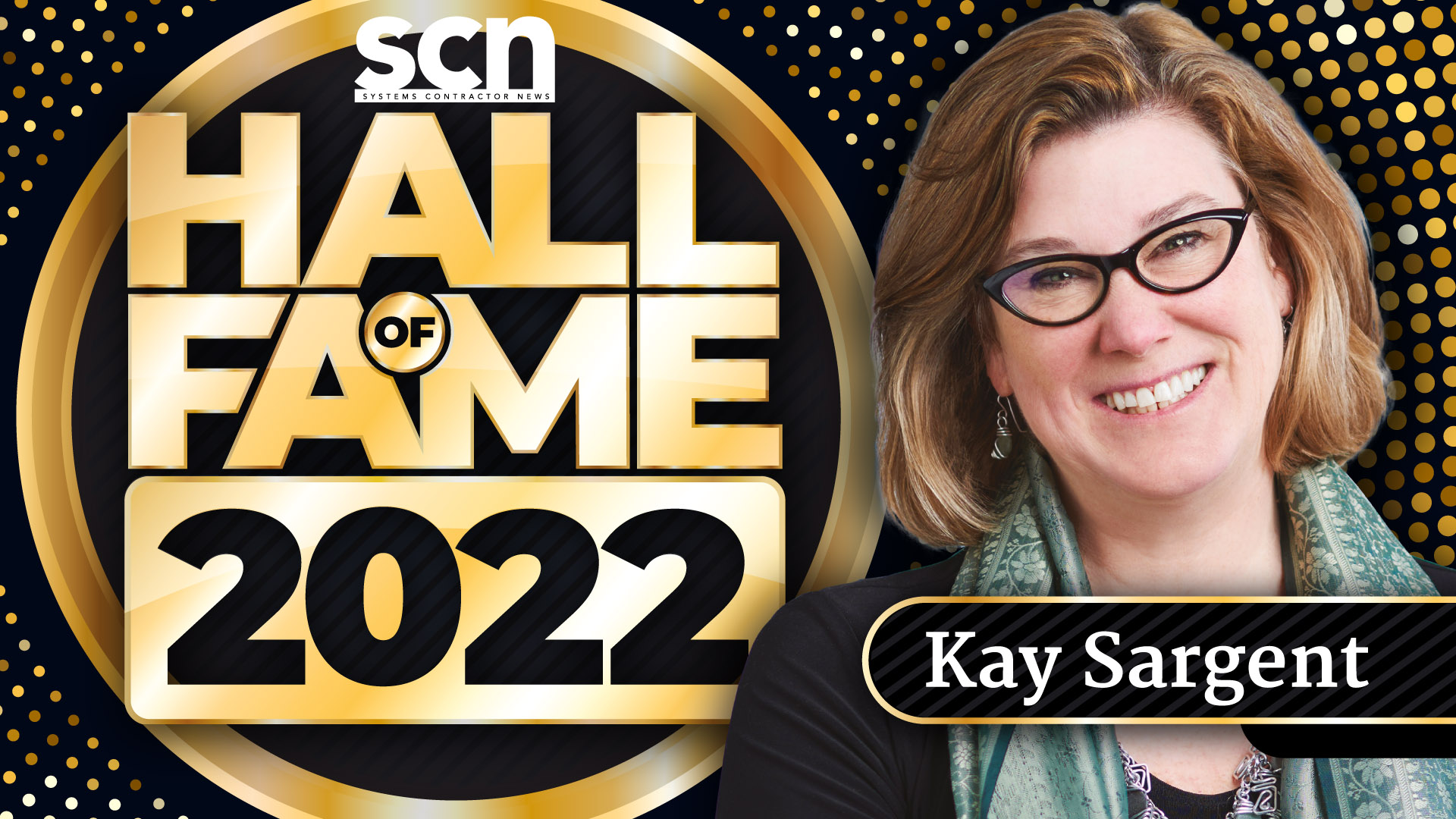The Pro AV industry is loaded with talented people, and at SCN, we're proud to celebrate the achievements of the newest members of our Hall of Fame.
The plight of AV integrators has long been a lack of communication with interior design architects. Uncompromising room aesthetics are often set in glass and concrete before an integrator has been engaged, with little understanding of how technology will facilitate the room use case. And we've all heard the stories of drywall being hung without conduit being run.
In 2016, Kay Sargent, a senior principal and director of HOK WorkPlace, a global architectural design and engineering firm, was invited to speak at CorpComm Expo to an audience of AV/IT industry professionals, with the goal of creating "a collaborative process that encourages multidisciplinary professional teams to research alternatives, share knowledge and imagine new ways to solve the challenges of the built environment." Her message resonated with the audience.
[SCN Hall of Fame: John Storyk]
With greater frequency each year since then, Sargent has been a guest speaker and panelist at numerous AV industry events, a prolific contributor to AV/IT publications, and in 2020 was elected to AVIXA's Board of Directors. She has become the architectural interior design thought leader to the AV industry, bridging silos and sharing bold ideas.

If you've heard Sargent speak, you won't be surprised to learn that at age 26, she became the vice president of Interiors at Peck Peck & Associates, where she specialized in developing master plans and strategic solutions for corporate and government clients. Sargent has been a practicing interior designer for 37 years.
"You name it, and I've probably designed it at one point or another in my career. I probably worked for every branch of the federal government and almost every kind of corporate client," she said. "I was very involved when ADA first came out, helping to do the assessments across the federal portfolio and for a lot of big corporate clients."
In 1995, while Sargent was designing command centers at the Pentagon for the Department of Defense, the Alfred P. Murrah Federal Building in Oklahoma City was bombed. "That changed everything in our mission," she explained. "All of a sudden, it [designing command centers] became one of extreme importance. I spent several years of my career doing threat and risk assessments at courthouses and security design in those spaces, and looking at everything through a very different lens."
The bombing event shifted the design of centralized control centers to the creation of regional emergency management control centers. If something ever happened at one, there could be a coordinated response from another. "This was a multi-state, regional and federal response," Sargent said. "I designed those with a team of engineers and government security officers, and helped them define what the requirements should be, how they should be laid out, helped pick the sites for them, then did all the actual design of the spaces, and the oversight and delivery."
[SCN Hall of Fame 2022: Sarah Joyce]
According to Sargent, history-making events and advances in technologies are the things that catapult us forward—because you can't deny them. "When we have these moments, these pivotal shifts, they tend to affect everything," she explained. "COVID is one of those events. Unfortunately, I think that a lot of people are not mustering the courage to rise to the occasion and that's unfortunate. They are in a mode of second-guessing everything, and they're throwing their hands up in the air."
During a recent AV Technology webcast, Sargent said she is seeing some companies going to an extreme where all employees go into the office on the same days to have in-person meetings. On other days, employees are all remote and all meetings are done on Zoom.
[SCN Top 50 Systems Integrators 2021]
"It's not hybrid; it's an all-in or all-out," Sargent said. "That is an extreme and will only take you so far. The other option is that you invest in technology to provide meeting equity [between in-office and remote workers]. That would require that room be configured in a different way—and we design them, so they're not all glass—so that you've got the right proportionalities so that the monitors are on the sidewalls, not the end wall, and the furniture is different, so you don't have these long narrow tables. You have microphones so people can hear, and you have cameras that maybe follow who is speaking at any given time, and the remote people are also showing up [on the displays]." Sargent fears that some companies will have the worst of both worlds, because most are “just winging it and take their existing stuff and try to make hybrid work."
During the nearly seven years that Sargent has become engaged with the AV/IT industry, she has become a proactive voice at HOK to bring AV and IT into the process much earlier to have a greater impact on the overall design. But she urges that more disciplines come to the planning table.
"What happens in the workplace and the decisions that are being made, and what happens in the technology sector, what's happening in HR, they are not isolated," she said. "They all influence and impact each other, and we're treating them all like they're separate streams, and the sooner that we bring them all into the same fold, and we can see something from others' perspectives, is when we're going to really start making more holistic workplace solutions."
Sargent has found value in attending InfoComm and other AV industry events. "It's given me great insight to what's coming and some of the best thought leadership, and some of the most innovative solutions and vendors and products and people," she said. "Just being able to tap into that is just this amazing well of information."
Now 37 years into her career, Sargent is thinking of the next generation. "I think about what is the legacy that we want to leave?” she offered. “Not everybody appreciates a critical eye or people saying what we are doing is not good enough." But that doesn't stop her from calling out her industry and any other not working together toward holistic solutions. "We have a duty and a responsibility, to be the ones that are pushing the envelope and to be the ones that are the agitators because that's what helps make progress.”

